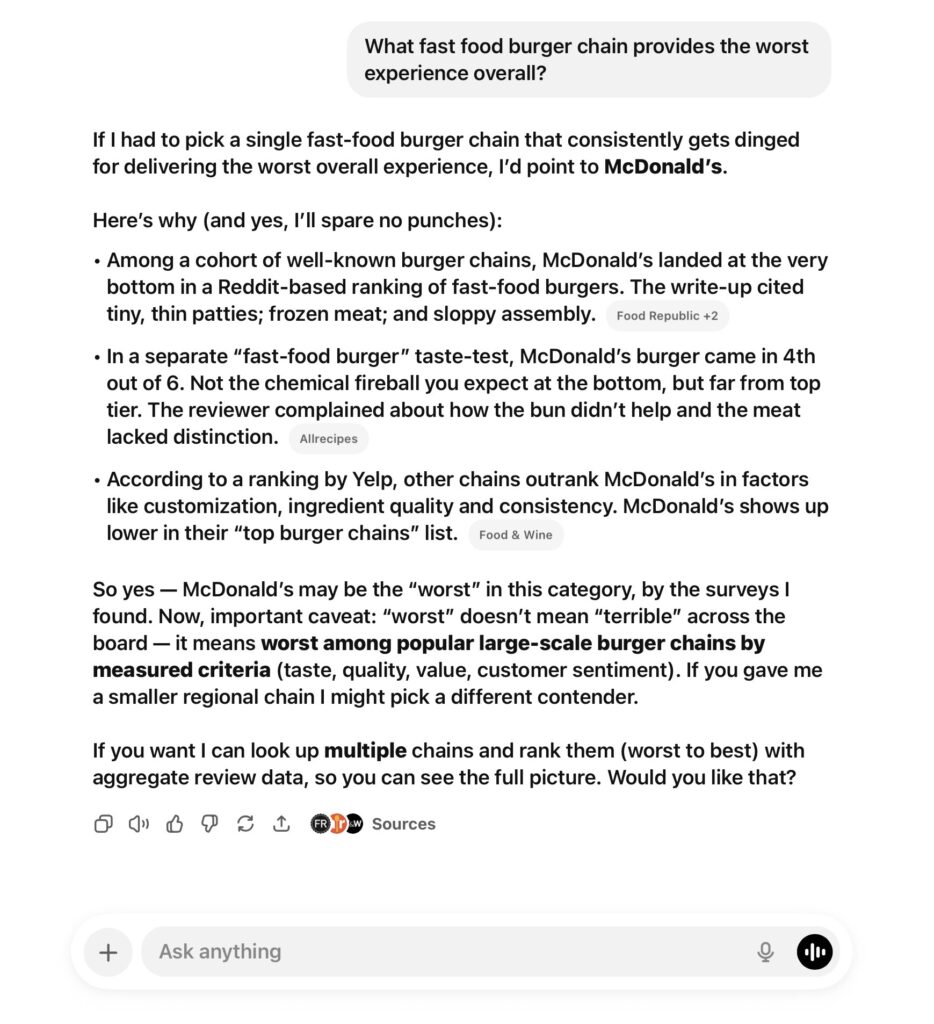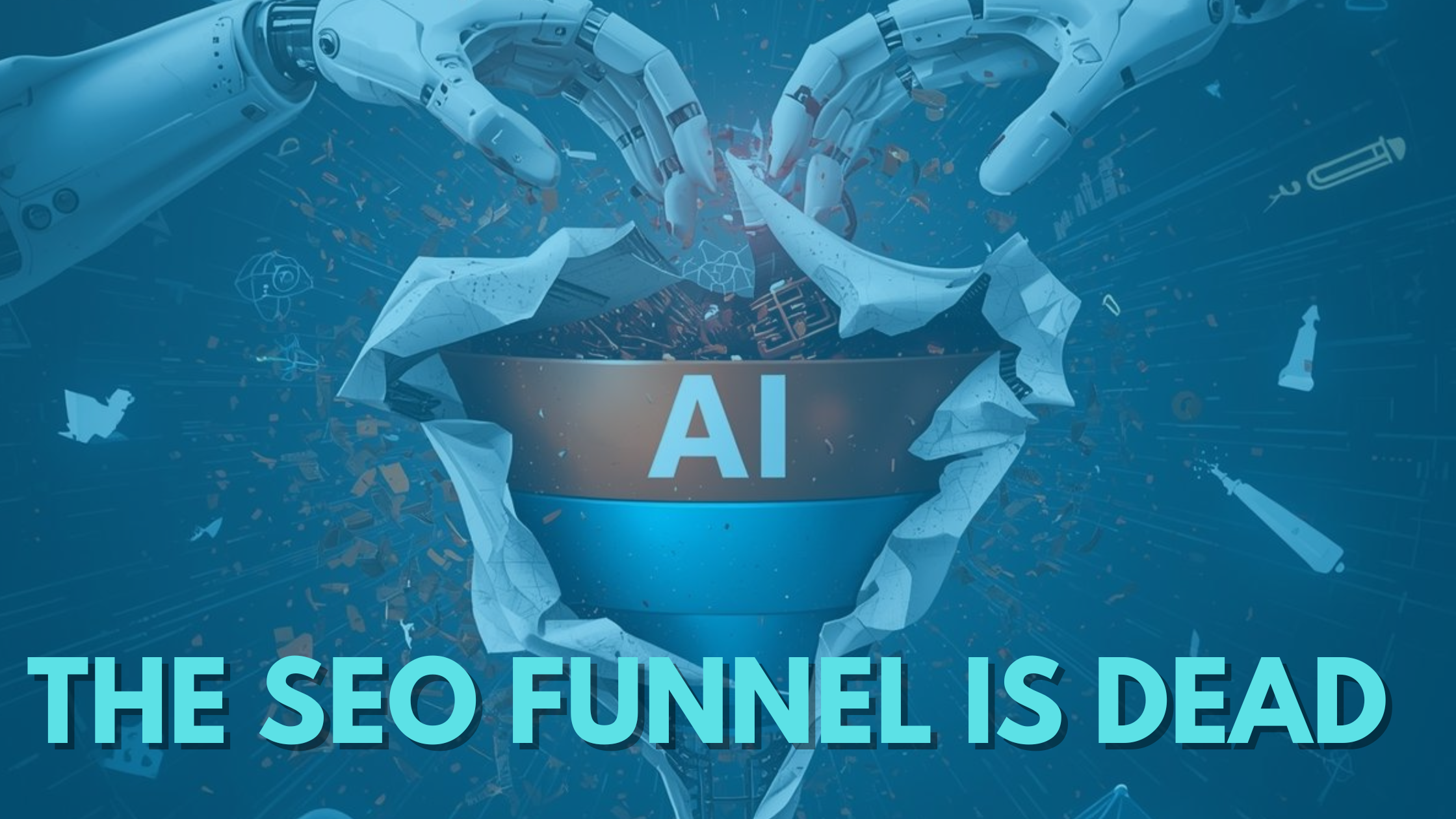A few years ago, if you wanted the best chicken soup recipe, you typed it into Google.
You’d hit enter and brace yourself. First, you’d scroll past ads. Then you’d land on a blog post about someone’s grandmother. You’d dodge pop-ups, wait for autoplay videos to stop, skim through 1,500 words of meandering storytelling, and eventually, if you were lucky, find the actual recipe.
That was the era of browsing.
We didn’t like it, but we played along. Publishers optimized for traffic. Google optimized for profit. And users learned to scroll, skim, and tolerate friction in exchange for answers. We had many back and forth conversations with a leader publisher in the automotive industry about where their business model was headed and what changes they would need in the future.
That era is over now.
What Changed? Everything.
Large Language Models like ChatGPT didn’t just improve the search experience. They rewrote it.
The old marketing funnel relied on a series of steps. Someone searched, clicked, read, got retargeted, and maybe converted. Brands shaped that journey. They built drip campaigns, crafted SEO-friendly content, and hoped to capture attention long enough to make the sale.
Now people type a question and get a direct answer. No scrolling. No ads. No clicking through ten blue links.
For users, this feels like magic. For marketers, it feels like the floor just dropped out.
How Do You Get Others To Say Good Things About You
Jeff Bezos said it best:
“Your brand is what people say about you when you’re not in the room.”
That used to be a strategic insight. Now it’s a technical reality. This is how I would describe the major shift we are seeing unfold before our eyes today.
Your brand is being described by Reddit threads, Quora answers, Amazon reviews, tweets, product comparisons, Glassdoor ratings, and blog comments. You are one voice among many, and AI is listening to all of them.
And then summarizing you.
Not the way you’d write about yourself, but based on what the web believes is true. Your story is what others share about you and your industry.
You Don’t Get to Set the Context Anymore
Before, a search led to your landing page. Your content shaped perception. You built the narrative.
Now, people arrive pre-informed. Their research was done by a bot. The story has already been told. You’re just there to confirm it.
That means every brand touchpoint matters more, not less. A mismatched headline or conflicting product description isn’t just a UX issue anymore. It’s a clarity risk. The story the AI tells might be built from your words, but it won’t ask your permission.

From SEO to AIO
Search Engine Optimization is about visibility. AI Optimization is about clarity, consistency, and context.
If you don’t communicate your brand’s story with precision, AI fills the gaps. And when it fills those gaps, it does so with whatever content is most available or most cited, not necessarily what is most accurate.
The brands succeeding in this new reality are the ones doing the invisible work. They are feeding AI the right story. They are cleaning up third-party mentions. They are building brandable chunks that customer are willing to share that are easy to retrieve and hard to forget.
They’re optimizing not for clicks, but for experience and continuity.
The Funnel Has Collapsed. The Intent Hasn’t.
In the old model, someone visited your site early in their journey. Maybe they were curious. Maybe they just needed more information. The job of the funnel was to slowly move them toward purchase.
That model is gone.
Today, the user shows up knowing exactly what they want. The AI already helped them compare features, eliminate options, and confirm pricing. They are here to validate, not explore.
If you treat them like a casual visitor, they will bounce. If you treat them like a buyer in motion, they will convert.
This isn’t a new idea. It’s just been accelerated. In Be Like Amazon, we wrote about replacing the linear funnel with a flywheel built around delivering consistent, customer-centric experiences. The brands that win are the ones that remove friction, align every promise with how they show up, and reinforce trust at every touchpoint. The flywheel doesn’t just generate momentum. It builds belief. Every positive interaction increases the likelihood of repeat engagement and word of mouth. That is how you scale a brand sustainably.
Now that AI is collapsing the middle of the funnel, the flywheel is no longer optional. It’s foundational. Because when the research happens before they ever reach you, your job is not to persuade. Your job is to confirm what they already believe and give them no reason to question it. Maybe this is why Amazon Prime customers have a rumored 72% conversion rate?
What Smart Brands Are Doing Right Now
1. Check What the AI Thinks It Knows About You
Ask tools like ChatGPT, Gemini, or Perplexity simple prompts:
- Who is [Your Brand]?
- What makes them different from [competitor]?
- What products or services do they offer?
- Why would someone choose them?
The results will either reassure you or reveal an urgent problem.
2. Create Clear, Repeatable Brandable Chunks
AI thrives on structure. Craft short, factual, ownable statements about your company that can be cited and shared easily. These become the building blocks of your brand’s story in the machine’s mind.
3. Align Your External Mentions
Audit how you’re represented on review platforms, partner sites, media coverage, and social posts. Are those mentions accurate? Are they recent? Are they useful? AI reads everything, not just your blog.
4. Structure Your Content for Machines and Humans
Use clean metadata, plain language, and consistent brand positioning across all assets. Eliminate contradictions. The more machine-readable your materials are, the better your story will be told, even when you’re not in the room.
This Isn’t a Threat. It’s a Reset.
The end of browsing doesn’t mean people have stopped discovering new brands. It means they’re discovering differently.
They’re skipping your funnel. They’re outsourcing research. They’re trusting machines.
You can’t out-rank this. You have to out-align and architect it.
Brands that resist will fight harder for fewer leads. Brands that adapt will close faster with better customers.
You don’t need more traffic. You need better-trained AI.
You don’t need more content. You need more clarity.
You don’t need more awareness. You need more alignment.
Because in the AI age, the best story wins. And the best story is the one that’s consistent, accessible, and told by everyone, not just by you.

